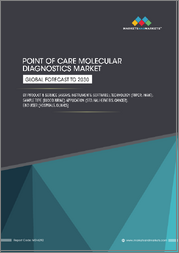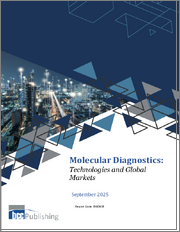
|
시장보고서
상품코드
1752091
유럽의 분자 종양 진단 시장 : 암 유형, 최종사용자, 국가별 분석 및 예측(2024-2033년)Europe Molecular Oncology Diagnostics Market: Focus on Cancer Type, End User, and Country - Analysis and Forecast, 2024-2033 |
||||||
유럽의 분자 종양 진단 시장 규모는 2024년 6억 600만 달러에 달했고, CAGR 10.78%로 성장을 지속하여 2033년에는 15억 2,340만 달러에 이를 것으로 예측되고 있습니다.
차세대 시퀀싱(NGS), 디지털 PCR, 리퀴드 바이옵시 등은 유럽의 분자 종양 진단 시장의 확대를 견인하는 기술적 진보의 일부입니다. 이 지역의 암 이환율 상승도 성장 요인 중 하나입니다. 더 나은 환자 결과, 더 정확한 치료 선택, 조기 발견은 이러한 진보로 가능합니다.
| 주요 시장 통계 | |
|---|---|
| 예측 기간 | 2024-2033년 |
| 2024년 평가 | 6억 600만 달러 |
| 2033년 예측 | 15억 2,340만 달러 |
| CAGR | 10.78% |
그러나 분자 종양 진단 시장으로의 보급에는 여러 지역 장벽이 존재합니다. 특히 중동유럽 국가에서는 의료예산이 제한되어 있기 때문에 분자진단검사의 고비용이 여전히 큰 과제가 되고 있습니다. 또한 고급 진단 기기의 조작이나 복잡한 유전체 데이터의 해석을 할 수 있는 전문 인력의 부족도 임상 현장에서의 광범위한 활용을 방해하는 요인이 되고 있습니다.
이러한 과제에도 불구하고, 유럽 시장은 꾸준히 성장을 계속하고 있습니다. 또한 각국의 의료 시스템에서 분자진단의 가능성을 극대화하기 위해서는 검사 비용의 인하, 지불 제도의 표준화, 의사의 유전체 리터러시 향상 등의 대처가 필요합니다.
시장 분류:
세분화 1: 암 유형별
- 고형암
- 혈액 악성 종양
세분화 2: 최종 사용자별
- 병원 및 진단센터
- 레퍼런스 랩
- 제약 및 바이오테크놀러지 기업
- 학술기관 및 연구기관
세분화 3: 지역별
- 유럽 : 영국, 독일, 프랑스, 이탈리아, 스페인, 기타
본 보고서에서는 유럽의 분자 종양 진단 시장을 조사했으며, 주요 동향, 시장 영향요인 분석, 법규제 환경, 기술 및 특허 분석, 시장 규모 추이와 예측, 각종 구분·지역/주요 국가별 상세 분석, 경쟁 구도, 주요 기업 프로파일 등을 정리했습니다.
목차
주요 요약
범위 및 정의
제1장 유럽의 분자 종양 진단 시장 : 업계 전망
- 세계의 암 발생률과 유병률(암 유형별)
- 유럽
- 동향 : 현상과 장래에 대한 영향 평가
- 기업간의 제휴 강화
- 분자 종양 진단 생태계에서 혁신적인 제품 출시 및 규제 승인 증가
- 규제 상황
- 유럽의 법적 요건과 틀
- COVID-19에 의한 분자 종양 진단 시장에 대한 영향
- 액체 생검에 기초한 암 분자진단
- 임상 검사(LDT) 및 체외 진단(IVD)
- 분자 종양 진단 시장에서 동반진단의 역할
- 시장 역학
- 시장 성장 촉진요인
- 시장의 과제
- 시장 기회
제2장 분자 종양 진단 시장 : 지역별
- 지역 요약
- 성장 촉진요인과 억제요인
- 유럽
- 지역 개요
- 시장 성장의 원동력
- 시장의 과제
- 암 유형별
- 최종 사용자별
- 독일
- 프랑스
- 영국
- 이탈리아
- 스페인
- 기타
제3장 분자 종양 진단 시장 : 경쟁 벤치마킹과 기업 프로파일
- 주요 전략 개발
- 제휴, 협력, 사업 확대
- 새로운 서비스
- M&A
- 규제 및 법적 활동
- 기업 점유율 분석
- 기업 프로파일
- Biocartis Group NV
- bioMerieux
- F. Hoffmann-La Roche Ltd.
- QIAGEN NV
제4장 조사 방법
>JHSThis report can be delivered in 2 working days.
Introduction to Europe Molecular Oncology Diagnostics Market
The Europe molecular oncology diagnostics market was valued at $606.0 million in 2024, and the market is expected to grow with a CAGR of 10.78% and reach $1,523.4 million by 2033. Next-generation sequencing (NGS), digital PCR, and liquid biopsy are just a few of the technological advancements driving the European molecular oncology diagnostics market's expansion. The region's rising cancer incidence is another factor. Better patient outcomes, more accurate treatment choices, and earlier detection are made possible by these advancements.
| KEY MARKET STATISTICS | |
|---|---|
| Forecast Period | 2024 - 2033 |
| 2024 Evaluation | $606.0 Million |
| 2033 Forecast | $1,523.4 Million |
| CAGR | 10.78% |
However, there are a number of regional obstacles to market penetration. The high expense of molecular diagnostic testing remains a hurdle, especially in nations with relatively limited healthcare budgets in Central and Eastern Europe. Furthermore, wider clinical usage is constrained by a lack of qualified personnel who can operate sophisticated diagnostic tools and decipher complicated genomic data.
The European market continues to grow in spite of these challenges. The integration of molecular tools into routine oncology care is being supported and innovation is being accelerated by cooperative efforts involving biotech companies, pharmaceutical companies, diagnostic producers, and academic research centres. Unlocking the full potential of molecular diagnostics in cancer management across various European healthcare systems would require efforts to standardise payment regulations, lower test prices, and increase clinician genomic literacy.
Market Introduction
The market for molecular oncology diagnostics in Europe is changing dramatically as more healthcare systems embrace precision medicine methods for treating cancer. Molecular diagnostics is becoming more and more important in detecting genetic changes connected to different types of cancer, driven by the demand for earlier detection, more precise diagnosis, and customised therapy planning. Advanced testing systems that support targeted therapies and enhance treatment outcomes are becoming more and more in demand in the region.
Adoption is accelerating in Western Europe, especially in nations like Germany, the UK, and France, because to established healthcare systems, benevolent legal environments, and rising genomic research expenditures. Central and Eastern Europe is progressively catching up, though, as initiatives are being made to standardise cancer treatment internationally and increase access to molecular diagnostics.
The market is also benefiting from the continuous integration of digital health, as oncology centres and labs use genetic data platforms to make decisions in real time. Demand in the market is also being driven by growing applications in risk stratification, treatment monitoring, and early diagnosis as well as rising awareness among physicians and patients. Europe is positioned to become a major centre for molecular oncology diagnostics, influencing the direction of customised cancer treatment in a variety of clinical settings as long as public and private health authorities keep funding innovation and capacity-building.
Market Segmentation:
Segmentation 1: by Cancer Type
- Solid Tumors
- Hematologic Malignancies
Segmentation 2: by End User
- Hospitals and Diagnostic Centers
- Reference Laboratories
- Pharmaceutical and Biotechnology Companies
- Academic and Research Institutes
Segmentation 3: by Region
- Europe - U.K., Germany, France, Italy, Spain, and Rest-of-Europe
Europe Molecular Oncology Diagnostics Market Trends, Drivers & Challenges:
Market Trends
- Expansion of Next-Generation Sequencing (NGS) Panels: Increasing use of multiplexed NGS assays for simultaneous detection of multiple oncogenic mutations, enabling broader genomic profiling.
- Growth of Liquid Biopsy Adoption: Rising preference for minimally invasive circulating tumor DNA (ctDNA) and circulating tumor cell (CTC) assays to monitor treatment response and detect early relapse.
- Integration with Immuno-Oncology: Molecular diagnostics platforms increasingly incorporate biomarkers (e.g., PD-L1, TMB) to guide immune checkpoint inhibitor therapies.
- Emergence of Companion Diagnostics: Co-development of targeted therapies and associated diagnostic tests is accelerating regulatory approvals and market uptake.
Market Drivers
- Rising Cancer Incidence & Aging Population: Europe's growing elderly demographic and higher cancer prevalence boost demand for precise diagnostic tools.
- Shift Toward Precision Medicine: Clinicians and payers favor personalized treatment plans, driving investment in molecular assays that predict therapy efficacy.
- Favorable Reimbursement Policies: Several European healthcare systems and HTA agencies are approving broader coverage for advanced genomic tests, reducing out-of-pocket costs.
- Technological Advancements & Cost Reductions: Continuous improvements in assay sensitivity, turnaround time, and economies of scale are making molecular tests more accessible.
Market Challenges
- High Test Development & Implementation Costs: Building validated panels and obtaining regulatory clearances remain expensive, limiting adoption in smaller hospitals.
- Fragmented Reimbursement Landscape: Inconsistent coverage policies across EU member states and varied HTA requirements create uncertainty for providers and manufacturers.
- Standardization & Quality Control Issues: Lack of uniform guidelines for assay validation, interpretation, and reporting can hamper cross-laboratory comparability.
- Data Privacy & Regulatory Complexity: Strict GDPR requirements and evolving IVDR regulations increase administrative burden and slow down clinical deployment.
Some of the prominent key players in this market are:
- Biocartis Group NV
- bioMerieux
- F. Hoffmann-La Roche Ltd
- QIAGEN N.V.
Table of Contents
Executive Summary
Scope and Definition
1 Europe Molecular Oncology Diagnostics Market: Industry Outlook
- 1.1 Global Incidence and Prevalence of Cancer (by Cancer Type)
- 1.1.1 Europe
- 1.2 Trends: Current and Future Impact Assessment
- 1.2.1 Increasing Partnerships among Players
- 1.2.2 Increasing Launch of Innovative Products and Regulatory Approvals in Molecular Oncology Diagnostics Ecosystem
- 1.3 Regulatory Landscape
- 1.3.1 Legal Requirements and Framework in Europe
- 1.4 Impact of COVID-19 on the Molecular Oncology Diagnostics Market
- 1.5 Liquid Biopsy-Based Cancer Molecular Diagnostics
- 1.6 Laboratory-Developed Test (LDT) vs. In-Vitro Diagnostics (IVD)
- 1.7 Role of Companion Diagnostics in the Molecular Oncology Diagnostics Market
- 1.8 Market Dynamics
- 1.8.1 Market Drivers
- 1.8.1.1 Rising Incidence of Cancer Cases
- 1.8.1.2 Rising Technological Advancements in Molecular Diagnostics
- 1.8.1.3 Growth in Biomarker Identification and Transformations in Molecular Techniques
- 1.8.1.4 Growing Demand for Personalized Medicine
- 1.8.2 Market Challenges
- 1.8.2.1 Lack of Qualified Professionals
- 1.8.2.2 High Cost of Molecular Diagnostic Kits and Assays Hindering the Adoption Rate
- 1.8.3 Market Opportunities
- 1.8.3.1 Focus on Reimbursement and Medical Coverage for Molecular Oncology Diagnostics
- 1.8.3.2 Focus on Next-Generation Ultrasensitive Molecular Diagnostics
- 1.8.3.3 Increasing Growth Opportunities for Molecular Diagnostics Companies in Emerging Economies
- 1.8.1 Market Drivers
2 Molecular Oncology Diagnostics Market: by Region
- 2.1 Regional Summary
- 2.2 Drivers and Restraints
- 2.3 Europe
- 2.3.1 Regional Overview
- 2.3.2 Driving Factors for Market Growth
- 2.3.3 Factors Challenging the Market
- 2.3.4 By Cancer Type
- 2.3.5 By End User
- 2.3.6 Germany
- 2.3.6.1 By Cancer Type
- 2.3.6.2 By End User
- 2.3.7 France
- 2.3.7.1 By Cancer Type
- 2.3.7.2 By End User
- 2.3.8 U.K.
- 2.3.8.1 By Cancer Type
- 2.3.8.2 By End User
- 2.3.9 Italy
- 2.3.9.1 By Cancer Type
- 2.3.9.2 By End User
- 2.3.10 Spain
- 2.3.10.1 By Cancer Type
- 2.3.10.2 By End User
- 2.3.11 Rest-of-Europe
- 2.3.11.1 By Cancer Type
- 2.3.11.2 By End User
3 Molecular Oncology Diagnostics Market - Competitive Benchmarking & Company Profiles
- 3.1 Key Strategic Development
- 3.1.1 Partnerships, Alliances, and Business Expansions
- 3.1.2 New Offerings
- 3.1.3 Mergers and Acquisitions
- 3.1.4 Regulatory and Legal Activities
- 3.2 Company Share Analysis
- 3.3 Company Profiles
- 3.3.1 Biocartis Group NV
- 3.3.1.1 Overview
- 3.3.1.2 Top Products
- 3.3.1.3 Top Competitors
- 3.3.1.4 Target Customers/End User
- 3.3.1.5 Key Personnel
- 3.3.1.6 Analyst View
- 3.3.2 bioMerieux
- 3.3.2.1 Overview
- 3.3.2.2 Top Products
- 3.3.2.3 Top Competitors
- 3.3.2.4 Target Customers/End User
- 3.3.2.5 Key Personnel
- 3.3.2.6 Analyst View
- 3.3.3 F. Hoffmann-La Roche Ltd.
- 3.3.3.1 Overview
- 3.3.3.2 Top Products
- 3.3.3.3 Top Competitors
- 3.3.3.4 Target Customers/End User
- 3.3.3.5 Key Personnel
- 3.3.3.6 Analyst View
- 3.3.4 QIAGEN N.V.
- 3.3.4.1 Overview
- 3.3.4.2 Top Products
- 3.3.4.3 Top Competitors
- 3.3.4.4 Target Customers/End User
- 3.3.4.5 Key Personnel
- 3.3.4.6 Analyst View
- 3.3.1 Biocartis Group NV
4 Research Methodology
- 4.1 Data Sources
- 4.1.1 Primary Data Sources
- 4.1.2 Secondary Data Sources
- 4.1.3 Data Triangulation
- 4.2 Market Estimation and Forecast



















